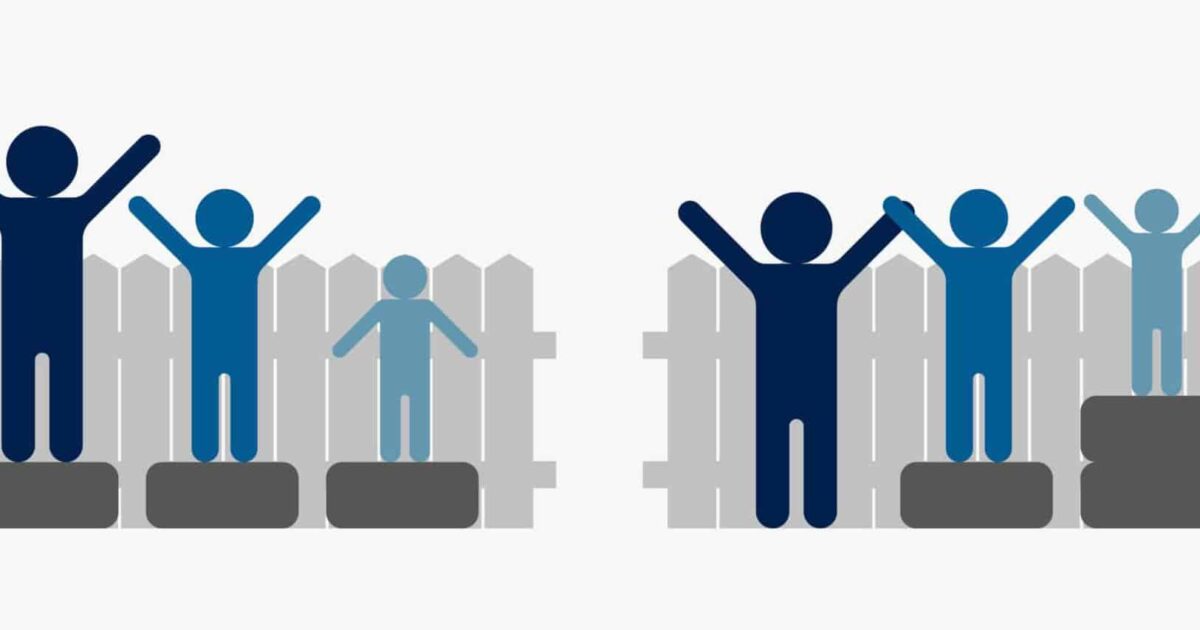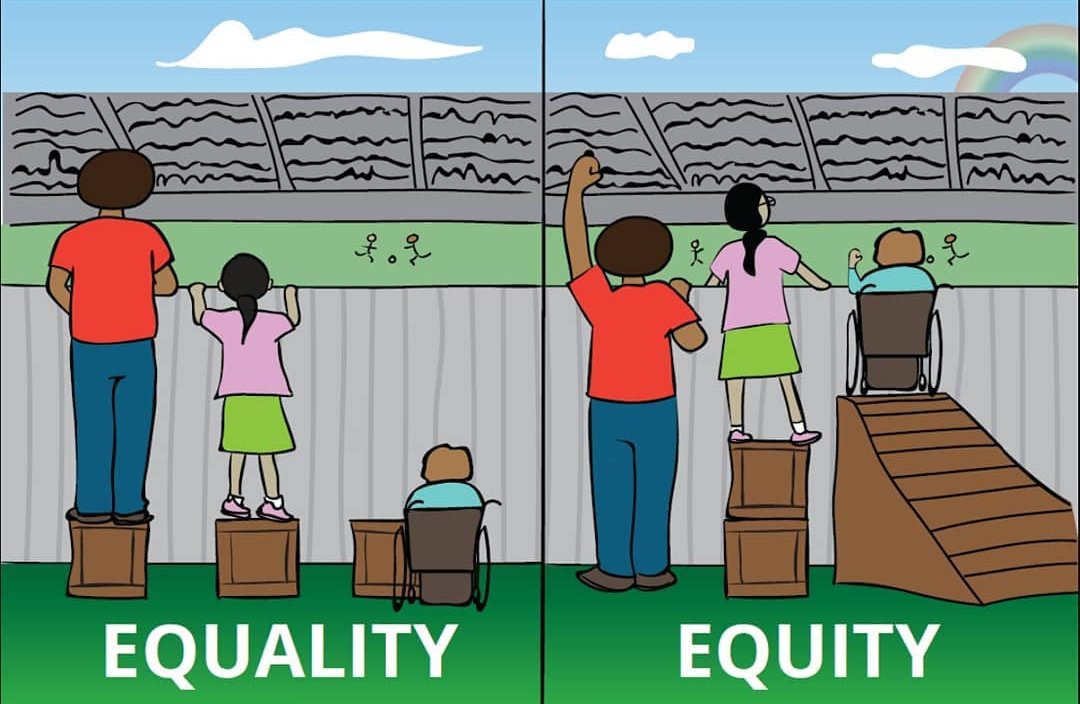
Equity vs. Equality
If someone were to ask what equity means to you, you might say that equity is a lot like equality. This is actually a very common response. Over Labor Day weekend I met with one of my friends in Royal Oak, Michigan to watch the Formula 1 race and catch up on life. I told him about some of the blog posts I have been writing for work and told him that equity was the next piece I was going to be blogging about. This prompted me to ask him what equity means to him. Guess what he said? “Yeah, I know what equity is. equity is a lot like equality, right?”
Equity is Not Equality
Take a minute to google the word equity. If you check out the image results, you’ll see three people standing on or beside boxes to watch a baseball game over a fence. I think we’ve all seen a photo like this at some point in time on Facebook, Twitter, Reddit, or whatever flavor of social media you view most. What this photo depicts is that considering equality, all three spectators are given an equal distribution of the boxes to see over the fence and watch the game. The issue is the tallest person can see the game quite well while the smaller viewer can barely see over the fence. The third is a person with a disability — the box is useless to them.

Seem fair? If we are considering equality, it’s about as equal as things can get. We have three people and three boxes; everyone gets a box. Looking at the photo, it is obvious what the correct solution is and in the subsequent scene we see that our baseball fans figure it out and distribute the boxes based on need and not based on what is equal. No one is at a disadvantage in the final photo – the playing field has, simply, been leveled.
The Focus of Equity
While equality aims to give everyone equal access to the same resources, equity does not. Equity instead aims to recognize that each employee comes from a different background (demographical, socioeconomical, etc.) and may require varying levels of resources and support to take equal advantage of the opportunities provided in the workplace. Equity and equality do not operate independently even though the way each problem is approached is quite different. The reality is that most organizations will need to take a blended approach when considering their DEI initiatives.
Considerations for a More Equitable Approach
Similar to what I pointed out in my blog on diversity in the workplace, there are many ways to tackle the equity challenge and there is no silver bullet. Here are just a few of the ways that companies have addressed the issue over the last few years.
Skill-based Hiring
The tables have slowly been turning on this one for some time now, so I believe it deserves a call out. In a poll conducted by LinkedIn in 2019, they found that 69% of professionals believe that verified skills are more important than a college education. Tim Cook, CEO of Apple, in another article pointed out that roughly half of Apple’s US workforce does not have a four-year degree. In terms of market cap, Apple is the most valuable company on the planet, and they don’t even require bachelor’s degrees for many of their positions. I was shocked when I read the article, so I did some digging on Apple’s career page. As I went through some of these job postings, I found that most of the positions (whether they were at Apple’s headquarters or elsewhere) did not have any specific educational requirements. If Apple doesn’t require a four-year degree for many of their more technical positions, do you really need to require one for your entry level positions? Rethinking this entire process for your organization not only helps to promote DEI, but it also will allow you to fill your positions more rapidly in a market that is favors the job seeker.
Fair Representation
Many organizations make the move to hire for diversity but fail to offer opportunities for advancement for this same group. What this looks like a year or two down the road is an overall increase in diversity within the organization, but this diversity is highly concentrated to positions that are generally lower in pay and authority. What studies show is that to promote true equity within the workplace, organizations must consider a succession plan at the lower levels of the organization. This helps to ensure that upward mobility is available to all employees — especially those with diverse backgrounds. Promoting diversity throughout all levels of the organization can lead to some incredible results. If you want to read more about this, I recommend checking out my blog post on diversity.
Education
A four-year degree is out of reach for many people. Systemic barriers make this especially challenging for people with disabilities, as well as black, indigenous and people of color (BIPOC). As you can imagine, for those new to the workforce, this can create an enormous amount of diversity debt when so many positions require degrees. While many organizations have been offering workforce education programs for some time now, this opportunity has taken more of the spotlight over the last few years as Target, Walmart, and Starbucks have all recently launched their own education programs. These programs offer marginalized employees with a potentially life-changing resource that allows them to grow their careers and grow within organizations.
Wrapping Up
While equity is the lesser-known part of the DEI trio, it is just as important to the equation as Diversity and Inclusion. Without equity, the underrepresented groups that your organization hires may never reach their full potential due to an unfair distribution of education, resources, and accommodation. By taking proactive measures to help make your organization more supportive for these groups, you can make equity the norm for your organization and leave a lasting impact on the lives of employees and the rest of the world.
